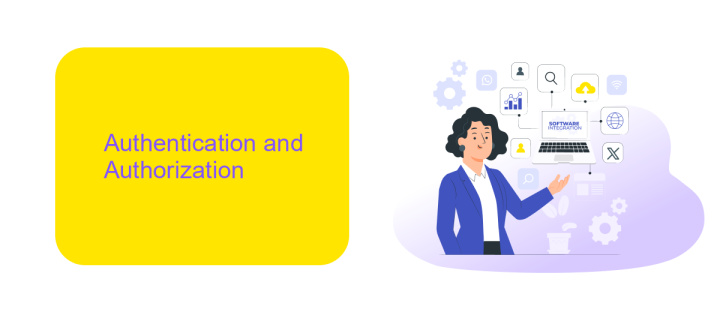Acumatica API Integration
Acumatica API Integration offers businesses a robust platform to streamline operations by seamlessly connecting various applications and services. By leveraging Acumatica's comprehensive suite of APIs, companies can enhance their workflows, improve data accuracy, and foster innovation. This integration facilitates real-time data exchange, enabling informed decision-making and operational efficiency. In this article, we explore the key benefits and practical applications of integrating Acumatica's APIs into your business ecosystem.
Understanding the Acumatica API
The Acumatica API is a robust framework that enables seamless integration with the Acumatica ERP system. It provides developers with the tools necessary to access and manipulate data within the platform. By utilizing the API, businesses can automate processes, enhance functionality, and ensure data consistency across different applications. This integration capability is crucial for organizations aiming to optimize their workflows and improve overall efficiency.
- RESTful architecture: The Acumatica API uses REST principles, making it easy to use and compatible with various programming languages.
- Comprehensive documentation: Detailed guides and examples are available to assist developers in understanding and implementing the API effectively.
- Authentication: Secure access is ensured through token-based authentication, safeguarding sensitive business data.
- Data manipulation: The API allows for CRUD operations, enabling the creation, reading, updating, and deletion of records.
Understanding the Acumatica API is essential for developers and businesses aiming to leverage the full potential of their ERP system. By integrating external applications and automating processes, companies can achieve greater operational efficiency and data accuracy. The API's flexibility and comprehensive features make it a valuable tool for any organization looking to streamline its operations and enhance its technological ecosystem.
Authentication and Authorization

When integrating with Acumatica API, proper authentication and authorization are crucial to ensure secure data exchange. Acumatica supports various authentication methods, including basic authentication and OAuth 2.0. Basic authentication requires a username and password, providing a straightforward but less secure method. For enhanced security, OAuth 2.0 is recommended, as it allows applications to access user data without exposing credentials directly. This method involves obtaining an access token, which grants limited access to resources for a specific period.
To streamline the integration process, services like ApiX-Drive can be utilized. ApiX-Drive offers a user-friendly interface for setting up and managing API connections, reducing the complexity of authentication configurations. It supports multiple authentication methods, including OAuth 2.0, ensuring secure and efficient data transfer. By leveraging such services, businesses can focus on their core operations while ensuring their API integrations are secure and compliant with industry standards. Properly managing authentication and authorization not only protects sensitive data but also enhances the overall reliability of the integration.
Performing Basic Operations with the API

Integrating with the Acumatica API allows developers to perform a range of basic operations essential for seamless data management. These operations include creating, reading, updating, and deleting records within the Acumatica system, often referred to as CRUD operations. Understanding how to execute these tasks efficiently can significantly enhance the functionality of your integration, ensuring data consistency and reliability.
- Authenticate with the API using OAuth 2.0 to obtain an access token.
- Use the GET method to retrieve data from specific endpoints.
- Utilize the POST method to create new records in the system.
- Apply the PUT method to update existing records with new information.
- Invoke the DELETE method to remove records that are no longer needed.
By mastering these basic operations, developers can build robust applications that interact seamlessly with Acumatica. It is crucial to handle API responses and errors appropriately to maintain data integrity and ensure a smooth user experience. Additionally, regularly consulting Acumatica's API documentation can provide valuable insights and updates, aiding in the development of more sophisticated integrations over time.
Advanced API Techniques and Best Practices

When integrating with Acumatica's API, leveraging advanced techniques can significantly enhance your application's performance and reliability. One key strategy is to use batch processing for data-intensive operations, which reduces the number of API calls and improves efficiency.
Another important practice is implementing robust error handling and logging mechanisms. This ensures that your application can gracefully manage unexpected issues and provide clear diagnostics for troubleshooting.
- Utilize OAuth 2.0 for secure authentication and authorization.
- Optimize API calls by using filters and selective fields to minimize data transfer.
- Implement caching strategies to reduce redundant API requests.
- Regularly monitor API usage and performance metrics to identify bottlenecks.
By adhering to these best practices, developers can ensure a more seamless and efficient integration with Acumatica's API. Staying informed about the latest updates and improvements in the API will also help in maintaining a robust integration. Continuous learning and adaptation are key to leveraging the full potential of Acumatica's API capabilities.
- Automate the work of an online store or landing
- Empower through integration
- Don't spend money on programmers and integrators
- Save time by automating routine tasks
Troubleshooting and Common Errors
When integrating with Acumatica's API, one common issue is authentication failure. This often occurs due to incorrect API keys or expired tokens. To resolve this, double-check your API credentials and ensure they are up-to-date. Another frequent error is related to endpoint configuration. Verify that the endpoints are correctly set up and accessible, as incorrect URLs or network restrictions can lead to connectivity problems. Additionally, ensure that your system's firewall settings allow communication with Acumatica's servers.
Data format discrepancies can also cause integration issues. Acumatica requires specific data structures, so validate that your data matches the required format before sending requests. If you're using tools like ApiX-Drive to facilitate integration, ensure that mappings and transformations are correctly configured to match Acumatica's requirements. Lastly, monitor error logs for detailed information on any failures, which can provide insights into the root cause and guide troubleshooting efforts. Regularly updating your integration tools and libraries can also prevent compatibility issues and enhance performance.
FAQ
What is Acumatica API Integration?
How can I authenticate API requests in Acumatica?
What are the common use cases for integrating with Acumatica API?
How can I automate Acumatica API integration without extensive coding?
What should I consider when handling errors in Acumatica API integration?
Do you want to achieve your goals in business, career and life faster and better? Do it with ApiX-Drive – a tool that will remove a significant part of the routine from workflows and free up additional time to achieve your goals. Test the capabilities of Apix-Drive for free – see for yourself the effectiveness of the tool.


